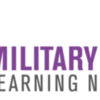Like a medical exam, a review of clients’ finances can identify strategies to improve their “financial fitness” and screen for potential problems, such as a high debt-to-income ratio. Below are 10 diagnostic tools to assess the strengths and weaknesses of a client’s financial situation that can be reviewed in a one-hour appointment:
- Online Financial Quizzes. Use Rutgers Cooperative Extension’s six online financial self-assessment quizzes for feedback on various aspects of personal finance.
- Financial Goals. Review annual progress benchmarks toward financial goals. For example, does someone have half of the savings toward a financial goal at the halfway point of their savings time frame? This worksheet can be used to set SMART financial goals with a dollar-cost and time deadline.
- Net Worth Statement. Review net worth (assets minus debts) to get a “snapshot” of an individual’s or family’s finances. Ideally, net worth should show a steady increase as the value of assets increases with regular savings and compound interest and debts decrease through steady repayment.
- Income and Expense Statement. Use this to analyze past spending patterns. There are four components that are totaled for a given month: income from all sources, fixed expenses (e.g., rent), variable expenses (e.g., food), and 1/12 the annual cost of irregular expenses (e.g., quarterly property taxes).
- Irregular Expense Check-Up. Have clients list all their expenses that come irregularly throughout the year. Examples include school tuition, gifts, insurance premiums, and vacations. Then total each expense and divide by 12. Advise clients to treat these expenses are monthly “bills” and set money aside for them.
- Financial Ratios. Create financial ratios by linking key pieces of information from net worth and cash flow statements. The liquidity ratio and debt-to-asset ratio are a great place to start.
- Credit Check-Up. Discuss strategies for lowering interest rates, progress toward debt repayment, a recent review of a client’s credit report for errors and evidence of identity theft, and a client’s progress toward raising their credit score.
- Tax Check-Up. Discuss clients’ marginal tax bracket, whether or not they are maximizing contributions to retirement savings plans, and other tax-reduction strategies such as deductions, credits, and long-term capital gains tax rates on assets held more than a year.
- Life Insurance Check-Up. Use a planning worksheet based on the income needs of dependents. These worksheets often assume that survivors need 75% of previous household income and include expenses such as mortgage repayment, funeral, and medical bills, and money for children’s college expenses.
- Retirement Check-Up. Help clients determine how much they need to save for a comfortable lifestyle in later life. A good tool to use is the free online FINRA Retirement Calculator.
For additional content related to working with clients on personal financial issues, visit the MFLN Personal Finance Team. Free CEUs are available for AFCs, CPFCs, and CFLEs through our webinars.
Written By:
Barbara O'Neill



Comments (0)